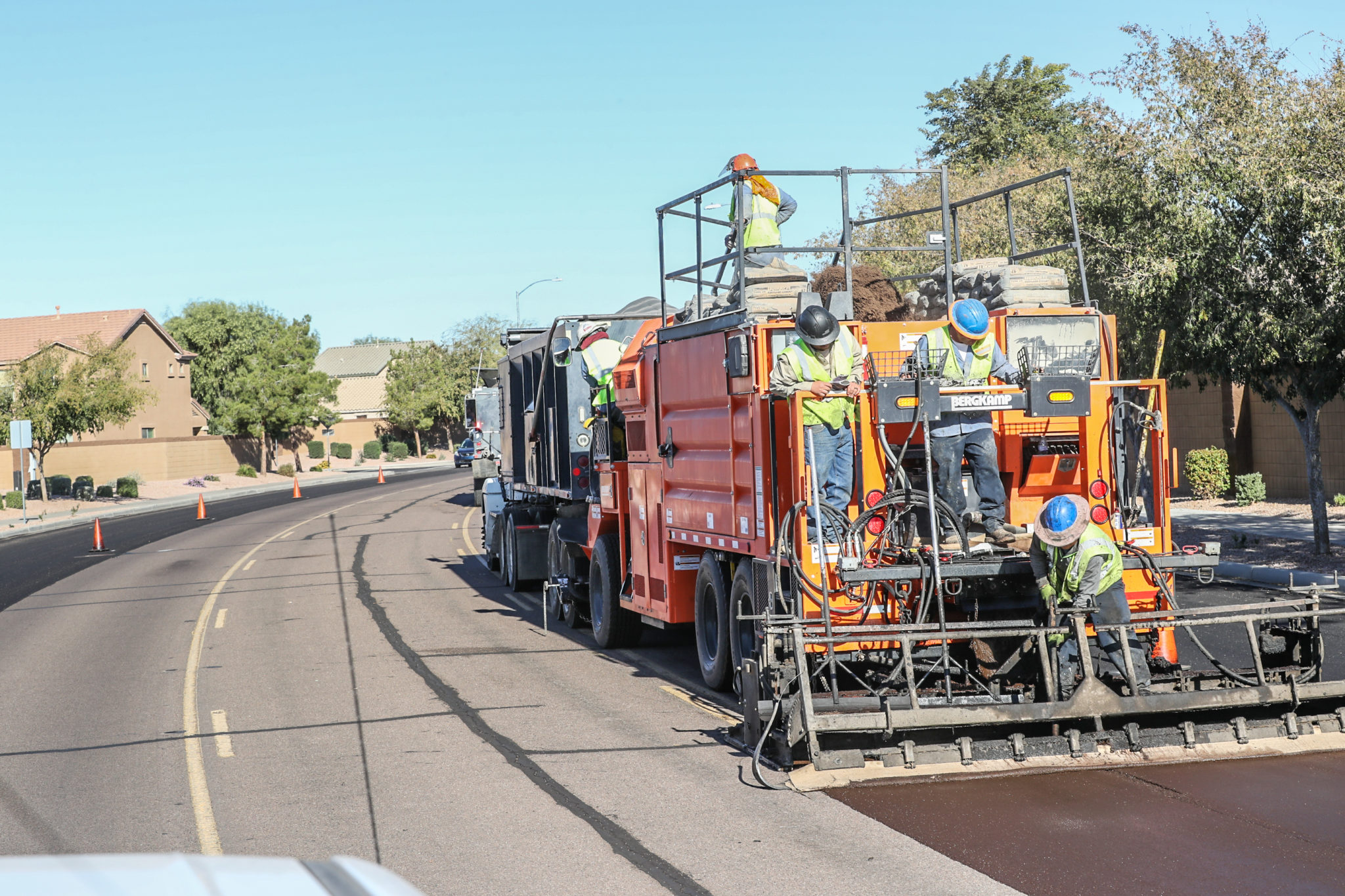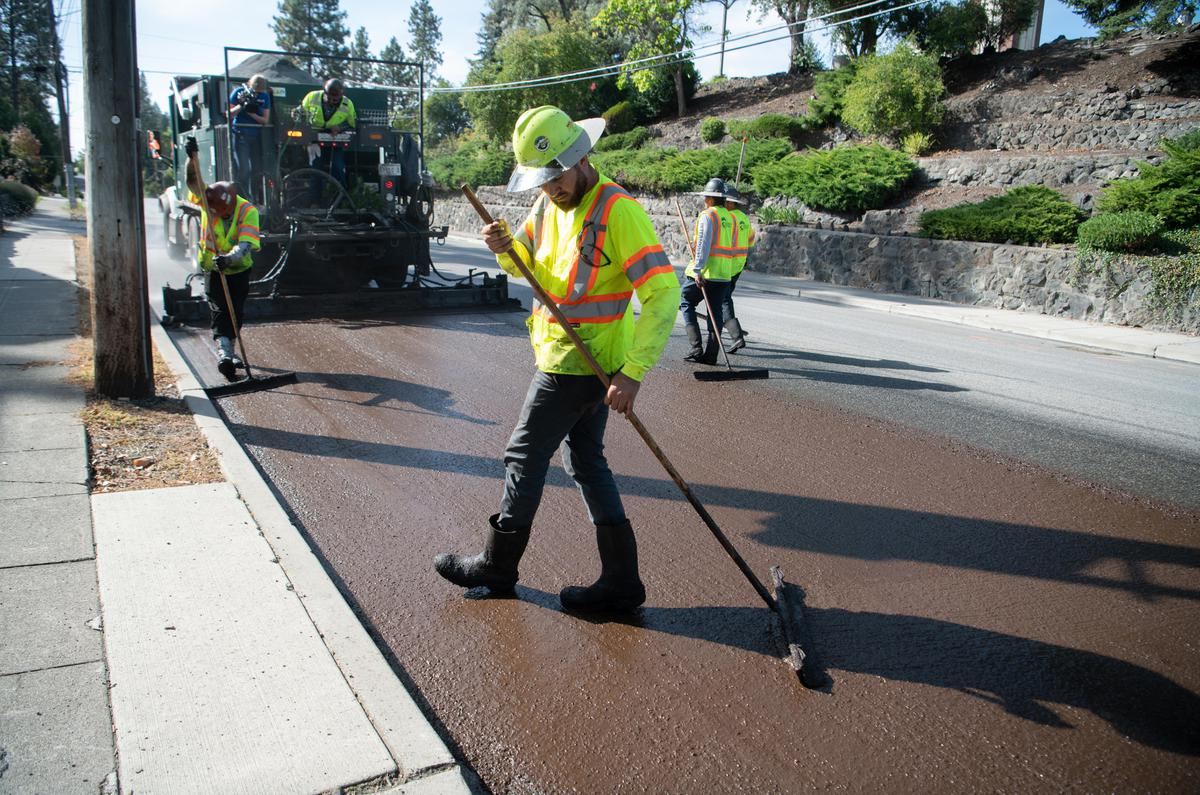Topical conversations and debates around greenhouse gas emissions and their contribution to global warming leading to climate change have conscientized the construction industry to adopt more low-temperature applications of pavement materials. Cold bitumen emulsion slurry systems combine the properties of neat and polymer modified bitumen emulsions, mineral additions and water. Cold bitumen emulsion slurry systems, quality control and quality assurance through viscosity and rheology testing and their different applications will be addressed in the article. Viscosity and rheology will be core to the discussions although understanding the slurry systems and their applications will bring better perspective to why their use is gaining more popularity in recent times.
Cold Bitumen Emulsion Slurry Systems
Cold bitumen emulsion slurry systems are dispersions of neat or polymer-modified bitumen diluted with water including limestone filler and cement. Their history dates back to the 1970s. The composition by mass of bitumen, cement, filler and water varies from 1.8-3%, 1-3%, 5-10% and 3-5% respectively. Cold bitumen emulsion mixtures use water instead of heat to lower bitumen viscosity to enable mixing with cold and wet aggregates at room temperature. Potential for using cold recycled mixtures which permit efficient reuse of large volumes of reclaimed asphalt incentivizes sparing use of natural resources. Cold in-place recycling using cement and bitumen emulsions is quite fast and relatively inexpensive even utilizing inferior deteriorated asphalt pavements. The physical and mechanical properties of cold bitumen emulsion slurry systems evolve over time, as emulsion breaking and setting, moisture loss and hydration of cement are time-dependent processes. Development of internal cohesion and suitable mechanical properties enable quick opening for traffic and construction of upper layers.

Composition and Attributes
Are environmental regulations, health and safety concerns or potential profit loss a concern right now?
Each component in cold bitumen emulsion slurry systems plays specific roles. The filler is normally added to fill in the voids in the mastic and limestone in this case also acts as a dehydrating agent which benefits strength development. Cement is used as an admixture responsible for creating hydraulic bonds. Small loadings of cement participate in breaking and setting of the emulsion in the process improving the short-term performance of cold mixtures by increasing stiffness, strength and moisture resistance. Higher loading of cement is associated with the development of a cementitious structure similar to most cemented materials. Bitumen emulsion as the primary binder creates bituminous bonds owing to the presence of the free and bound surfactant to the residual bitumen which results in cohesion whilst providing sufficient flexibility to the layer. Choice of the emulsion is key in slurry systems. Cationic emulsions are affected by pH changes and cement addition neutralizes the acids in the cationic emulsions leading demulsification. Anionic emulsions may suffer from the effect of multivalent ions, especially calcium that is released by cement on contact with water and may react with a surfactant to destabilize the bitumen emulsion.
Viscosity and rheology of cold bitumen emulsion slurry systems are used as quality control and quality assurance techniques. Real-time monitoring of the development of consistency as the binding effect of bitumen emulsion and cement participate in the cold bitumen emulsion slurry systems can be performed on the Brookfield viscometer and dynamic shear rheometer. Different spindle geometries and apertures can be used to monitor the viscosity on these instruments. Examples for the Brookfield viscometer include the dual helical ribbon and the rotor and cylinder geometries. The dynamic shear rheometer geometries include rotor and cylinder, stirrer type four-bladed vane, parallel plate and dual helical ribbon. As the emulsion breaks and the cement confers strength to the slurry system structure emerges with supposed yield stress with a reduction in the water owing to hydration of cement. Rheology then focuses on the deformation and flow behavior of the slurry system and the dynamic shear rheometer can be used to monitor yield stress and thixotropy at varying temperatures, shear rates, duration. Methods can be developed to monitor slurry systems at constant angular velocities over time with variations in linear or step-growth testing.
Applications and Storage Constraints

The different applications of cold bitumen emulsion slurry systems include either dispersions or pastes owing to their composite nature. Slurry systems consisting of bitumen emulsion, cement and water have shown that irrespective of water content the initial and final setting time of pastes increases when the proportion of bitumen to cement ratio increases owing to the retarding effect of bitumen emulsion on cement setting. Viscosity has been found to decrease with increasing shear rate due to gradual breaking of slurry system flocculated structures. The mixing protocol involves mixing cement and water first prior adding the emulsion to avoid breaking the emulsion before the viscosity and rheological measurements can be performed on the samples. Soon after mixing, dispersed phase consisting of bitumen and cement in the continuous phase of water results increased viscosity. As bitumen increases relative to cement the viscosity decreases owing to reduction of average particle size and to higher concentration of surfactant.
At high dispersed phase concentration, increase in storage time leads to a change in the physical state of the pastes from fluid to plastic due to coalescence of the bitumen emulsion. High volumetric concentration of bitumen droplets and cement grains account for crowding pressure generated inside the paste. In limestone filler and bitumen emulsion systems lower viscosity is persistent even at high concentration of the dispersed phase with no marked difference in viscosity over storage. Limestone filler has been found to have reduced effect on stability of bitumen emulsion relative to cement. Appropriate bitumen emulsion selection should guarantee that the emulsion can maintain its stability before compaction which is often confirmed by the mixing stability test. As no standard test exists for mixing stability monitoring viscosity over time representative of the distance from mixing plant to construction site enables one to obtain the gelation time of the bitumen emulsion.
Concluding
The importance of quality control and quality assurance in cold mix technologies can never be overemphasized, as a matter of fact, they are the core to well-thought mixture designs related to applications of cold bitumen emulsion slurry systems. This then flows into the onsite blending and construction phase to ensure equipment and construction best practices are followed to ensure successful outcomes.
Your feedback is important to us. If you enjoyed reading this Global Road Technology industry update and found it informative, please let us know by leaving a REVIEW.
REFERENCES
Fang, X., Garcia-Hernandez, A., and Lura, P. 2016. Overview on cold cement bitumen emulsion asphalt. RILEM Technical Letters. 1. 116-121.
Garilli, E., Autelitano, F., Godenzoni, C., Graziani, A., Giuliani, F. 2016. Early age evolution of rheological properties of over-stabilized bitumen emulsion-cement pastes. Construction and Building Materials.125. 352-360.
Ouyang, J., and Tan, Y. 2015. Rheology of fresh cement asphalt emulsion pastes. Construction and Building Materials.
Ouyang, J., Tan, Y., Corr, D.J., and Shah, S.P. 2016. The thixotropic behavior of fresh cement asphalt emulsion paste. Construction and Building Materials. 144. 906-912.
Yuliestyan, A. 2017. Binder design for low temperature asphalt mixes. PhD Thesis. University of Huelva.
Zhang, Y., Kong, X., Hou, S., Liu, Y., and Han, S. 2012. Study on the rheological properties of fresh cement asphalt paste. Construction and Building Materials.
Troy Adams
Troy Adams is the Managing Director of Global Road Technology (GRT) Specialising in Engineered Solutions for Dust Suppression, Erosion Control, Soil Stabilisation and Water Management. A pioneering, socially conscious Australian entrepreneur, Troy Adams is passionate about health and safety and providing innovative solutions that are cost-effective to the mining industry, governments and infrastructure sectors. Troy is also a tech investor, director of companies like Crossware, Boost, Hakkasan, Novikov and more.

